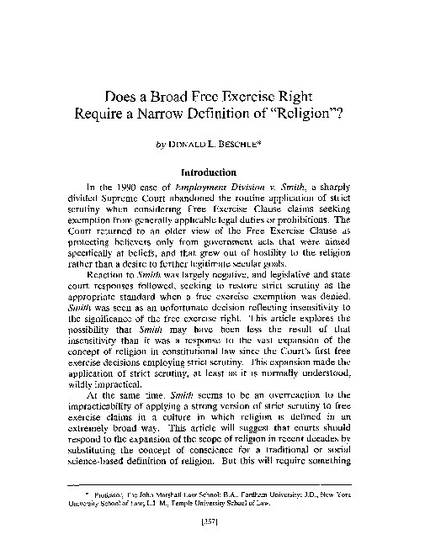
The Supreme Court case of Employment Division v. Smith revived an older view of the Constitution's Free Exercise Clause that protected believers only from government acts aimed at beliefs specifically, where those acts grew out of hostility to the religious belief rather than a desire to advance or protect otherwise legitimate nonreligious goals. This reversion to a previously discarded standard by the Supreme Court was much criticized, and states around the country sought to undo its effect by enacting and applying strict scrutiny standards for governmental regulation of religious belief despite there no longer being a Free Exercise exemption.
This article offers a possible explanation for why the Court undertook this generally misunderstood change of course. The Court did so in order to navigate a concept of religion that has expanded considerably since the prior doctrine had been applied, and where the application of strict scrutiny, as in other recent cases, was an entirely impracticable standard. Faced with a different animal, the Court felt compelled to employ a different kind of analysis.
Still, Smith appears to have been an overreaction to the Court's hesitation to apply a strict scrutiny standard to a concept of religion that has become far less clearly defined in recent history. This article provides a means to understand Smith, not through the traditional, scientific view of religion; but through the window of conscience oriented notion of religion. A standard of proportionality in determining whether to refuse to grant an exemption on free exercise grounds would be better than Smith's low-level scrutiny as well as the strict scrutiny standard suggested by earlier Supreme Court precedent.
Available at: http://works.bepress.com/donald_beschle/56/
